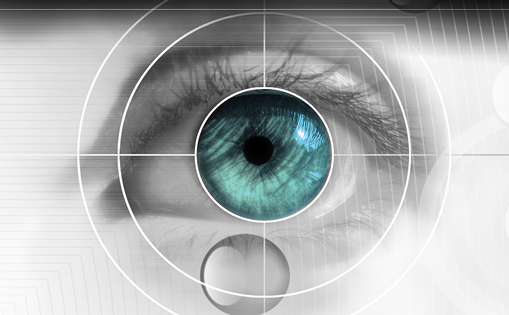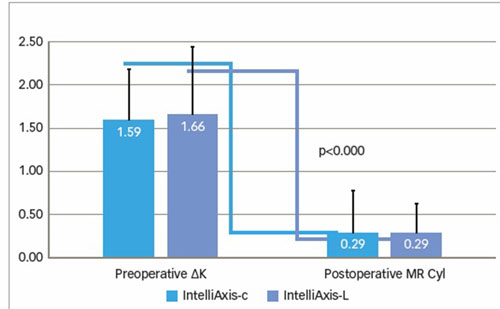Six decades have passed since the first implantation of an artificial intraocular lens (IOL) into a human eye. Since then, cataract and refractive surgery have developed into the most frequent and most successful surgical interventions in the history of medicine. Every year more than 11 Mio lenses are implanted worldwide, providing excellent chances for the majority of patients to regain good vision. However, a small, yet increasing, number of eyes require special consideration. Among these problem eyes are those with extreme axial lengths and those after refractive surgery. The number of patients presenting with cataract after refractive corneal surgery has been continuously increasing over the years. IOL calculation in these patients is still a challenge, although the special problems associated with these eyes are well understood. In the literature, there are a considerable number of articles offering solutions or workarounds to the IOL calculation problems after refractive surgery. Several review articles include an in-depth analysis of current algorithms.1–4 Help can also be obtained via the Internet. A spreadsheet (Hoffer/Savini tool) programmed with virtually all the algorithms published to date can be downloaded from Dr Ken Hoffer’s website5 at no cost. Also, on the American Society of Cataract and Refractive Surgery (ASCRS) website6 an online calculator offers free use of a variety of published calculation methods. Recently, the Asia-Pacific Association of Cataract and Refractive Surgeons (APACRS) also launched a free online calculator for ‘Biometry calculation post refractive surgery‘,7 which is an implementation of Graham Barrett‘s true-K formula.8
This article does not aim to create another detailed review of the current methods to determine IOL power for eyes after refractive surgery. Excellent articles serving this purpose can be found in the literature. Rather, it intends to give a more generalised characterisation of the specific problems involved and how these are addressed by the different algorithms available.
Also an update on the clinical performance of the Haigis-L formula9 is presented. Since its publication in 2008, the outcomes of 91 more eyes have become available, leading to a total of 278 documented cases.
Biometry
After refractive surgery eyes are considered problem eyes because of the specific difficulties associated with IOL calculation (which are discussed below) and the high expectations patients have about the outcomes of surgical procedures. In this situation, all factors potentially threatening the quality of the surgical result have to be under control. Measurement errors, for example, must be minimised and this is especially true for axial length, which has been the largest source of error in IOL calculation. With optical biometry, the quality of axial length measurement is no longer a problem. Consequently, patients who have undergone refractive surgery should have axial length measurement using optical biometry (or immersion ultrasound) rather than contact ultrasound.
Specific Problems for Eyes after Refractive Surgery
Error Sources for Intraocular Lens Calculation
Essentially, there are three main sources of errors in IOL calculation after refractive surgery: the radius measurement error, the keratometer index error and the IOL formula error.
The refractive power of the cornea (however it may be defined) is an important input parameter for the calculation of IOL power. Unfortunately, there is no instrument to directly measure corneal power (‘Ks’) in diopters. Keratometry or topography derive corneal power from the radius of corneal curvature. Due to the measurement principle applied, it is not possible to take the measurements at the optical axis, but rather a little peripherally. Depending on the optical zone of the ablation, in the periphery there is a good chance of measuring a steeper radius than is actually effective at the centre (e.g. after preceding laser surgery for myopia). Therefore, the corneal power will be overestimated, the IOL power underestimated and the patient left hyperopic. This radius measurement error is relevant when patients have had laser surgery for myopia. However, after laser vision correction (LVC) for hyperopia this should not be a problem, although evidence demonstrating this is lacking.
The keratometer index error stems from the fact that in classical keratometry or corneal topography the corneal power is derived from a measurement of the anterior corneal surface alone without knowledge of the properties of the posterior corneal surface. This works only if there is a fixed ratio between anterior and posterior corneal curvatures because only then is it possible to derive the posterior radius from the anterior radius or the posterior surface power from the anterior. This ratio is reflected in the keratometer index (KI), which is used to convert the measured anterior corneal radius Rant into the refractive power K of the cornea according to the following:
However, this ratio is deliberately altered by refractive surgery. Consequently, the keratometer index is no longer constant and will lead to meaningless K values in these cases.
The IOL formula error, eventually, is typical for the ‘American formulas’ (Hoffer Q, Holladay-1, SRK/T), all of which use Ks to predict the effective lens position (ELP). Including Ks, namely the corneal radii, in the ELP prediction makes sense because they represent to a certain degree the geometry of the anterior segment: flat radii are usually associated with smaller, steep radii with larger ELPs. This concept has already been used by Fyodorov and Kolonko10 in the first IOL power formula; however, after refractive surgery, the Ks no longer represent the eye’s geometry as is the case in the cornea’s untouched state. The ‘new’ flat corneal radii are falsely linked to shallow ELPs, causing a hyperopic refractive shift in patients after laser surgery for myopia and a myopic shift after preceding LVC for hyperopia.
Magnitude of Error Contributions
If allowance is not made for these error sources, the overall effect is a hyperopic deviation in eyes after LVC for myopia, which can be up to 3D, and a typically smaller myopic shift in eyes after refractive surgery for hyperopia.
The radius error depends on the measurement area of the keratometry instrument and on the optical zone affected by the laser. Typical diameters of keratometer measurement areas are 3.4 mm for the Haag-Streit11 and 2.5 mm for the Zeiss12 keratometers. With the development of modern lasers in the last few years the optical zones have become larger, so the radius error is considered to be minor, 13,14 only a few tenths of a diopter.
The individual contributions of the keratometer index and the IOL formula errors can be assessed from model calculations. In previous publications15,16 myopic model eyes were constructed from the Gullstrand eye by extending the vitreous length and keeping the anterior ocular segment constant. Laser refractive surgery was then simulated by varying the anterior corneal radii to make the eye emmetropic. Figures 1–3 were produced using model eyes from earlier articles and introducing two additional model eyes with refractions of around -4 and -8D. Figure 1 gives the correction curve for our model eyes to derive the effective (vertex power) K from the classically defined ‘measured’ K (=3375/Rant, Rant = anterior corneal radius in mm). Figure 2 shows the keratometric error as a function of the achieved refraction. Figure 3 plots the virtual anterior displacement of the lens due to the IOL formula error for different popular power formulas (following Haigis16).
Figure 1 shows that the keratometric measurement of an eye after myopic LVC as if it were a normal eye suggests a corneal power change from 44 to 38 D when it only changed from 44 to 37 D. Figure 2 relates the change in achieved refraction to the error in corneal power ‘measurement’: for a 10 D refractive change – dependent on whether the total or the vertex power of the cornea is considered – the error is between 1.1 and 1.3 D. A detailed explanation ‘vertex’ and ‘total’ corneal powers is given in the appendix of Haigis.15
Figure 3 illustrates the formula error in terms of virtual IOL displacements. Elementary optics can easily show that a lens shift of 1 mm causes a typical refractive change of 1.9, 1.2 and 0.6 D in a short (21 mm), normal (23.5 mm) or long eye (27 mm). For a person who previously had -10 D myopia and using the SRK/T formula, the virtual displacement in Figure 3 is nearly 2 mm, which is equivalent to refractive changes of 2.4–1.2 D for normal to long eyes.
The errors are significantly smaller for the Holladay-1 and Hoffer Q formulas and zero for the Haigis and SRK II formulas. The latter finding is not surprising: the Haigis formula does not use the corneal curvature as an ELP predictor, and the SRK II formula, being purely empirical, does not have an ELP prediction.
To summarise, the error sources in IOL calculation after refractive surgery, the radius measurement error is comparatively small and related to the measuring keratometer and the optical zone, and plays a role only in formerly myopic eyes. The largest contributions stem from the keratometer index and the IOL formula errors, with the former depending on the achieved refractive change and the latter on the individual IOL formula used.
Therefore, there cannot be a universal solution to the problem of IOL calculation after refractive surgery. Each individual solution must make allowance for the measurement instruments involved and the formulas used. To make things more difficult, instrument designs, the dimensions of laser treatment zones and calculation algorithms change. Therefore, the formulas of tomorrow will be different from the ones we use today.
Approaches in the Literature
General Characterisation of Algorithms
As a consequence of the multiple error influences described above, there are a variety of approaches in the literature to dealing with eyes after refractive surgery, which cannot be readily compared. There are formulas to calculate the necessary IOL power and the effective corneal power after refractive procedures. The latter formulas correct the keratometry index error resulting in explicit expressions for the effective corneal power.17–26 These expressions, either for the total or the back vertex power of the cornea, may be given as direct functions of measured corneal power values22–26 as in Figure 1 or as functions of the achieved change in refraction24 as in Figure 2. Instead of the refractive change itself, some authors21,27 use other variables that are more or less directly related to the achieved change in refraction.
Deriving a corrected corneal power value is not enough for the IOL calculation after refractive surgery because the IOL formula error is still in effect. One solution to this problem is Aramberri’s double-K correction,28 which uses the preoperative K value (or an average constant value) to calculate the effective IOL position. Another method to overcome the IOL formula error is to select a power formula, which does not use the corneal radius as an ELP predictor. Examples of this approach are the Shammas29 and the Haigis formulas9 (which therefore only need a correction for the keratometer index error).
A multitude of other procedures27,30–37 can be found in the literature that apply different methods to derive an IOL power recommendation rather than a corrected corneal power. Among these procedures are formulas that make allowance for the achieved refractive change30,31,33,36,37 or IOL power values deduced with data prior to refractive surgery.30,32
Common to all these approaches is that historical data and/or additional measurements and/or special measurement parameters are required. The proposed solutions are usually described for specific measurement instruments or specific IOL power formulas and cannot directly be transferred to another measurement or calculation setup.
Methods Requiring no Historical Patient Data
IOL calculation methods for eyes after refractive surgery differ most in whether they require historic patient data or whether they rely only on current measurements. Obviously, in everyday clinical practice, no-history methods are the most important. Among them are the R-factor method of Rosa et al.,21 the no-history method of Shammas and Shammas,29 the BESSt formula of Borasio et al.35 based on Pentacam results, the Geggel ratio method27 and the Haigis-L formula9 for the IOLMaster. Since the publication of the Haigis-L formula in 2008, the outcomes of 91 more eyes have become available, providing clinical experience for a total of 278 eyes. As an example of the performance of a no-history method, an update is presented below.
Clinical Results
Haigis-L Formalism
Clinical results using the Haigis-L formula are available for 278 eyes after IOL implantation following LVC. Of these, 222 eyes were previously myopic and 56 hyperopic.
The formerly myopic eyes received 35 different IOL types from 64 surgeons, while the hyperopic eyes were supplied with 13 different IOL models by 15 surgeons. Biometry and keratometry were carried out for all patients with the Zeiss IOLMaster, and IOL calculation was performed from current measurements using the Haigis-L formula (which is included in the IOLMaster software version 4.x onwards). In the majority of cases IOL calculation was done prospectively.
The mean arithmetic prediction errors were -0.08 ± 0.71 D for myopic and -0.06 ± 0.77 D for hyperopic eyes. The respective median absolute errors were 0.37 and 0.40 D. Of the myopic eyes, 98.6 % were correctly predicted within ±2 D, 82.9 % within ±1 D and 59.9 % within ±0.5 D. The respective percentages for eyes after surgery for hyperopia were 96.4 %, 82.1 % and 58.9 %.
These results compare favourably with normal eyes, although the error margins for the predicted refraction are slightly higher in eyes after refractive surgery. This can be seen from a comparison of the Haigis-L outcomes with the proposed benchmarks for normal eyes as recommended by Gale et al.38 Gail et al. demand correct refraction predictions within ±0.5 D in 55 % and within ±1.0 D in 85 % of all cases. The results for our refractive surgery eyes are better for the 0.5 D percentages and close to the 1.0 D percentages for normal eyes.
Comparisons with Other Formulas
Comparisons of different algorithms is often not easy due to the small numbers of cases and/or the different set-ups necessary to apply the different formulas. Recently, two comparative studies were published overcoming these limitations: McCarthy et al.39 report on 173 eyes after LASIK/PRK for myopia and subsequent cataract surgery. They compared the performances of 25 combinations of corneal power adjustment formulas and IOL power formulas (which were used with the double-K correction28) and obtained the following five best formula combinations: Masket33/HofferQ, clinical history method17,18/HofferQ, Latkany Flat-K31/SRK/T and the Shammas no-history29 and Haigis-L9 formulas. The mean arithmetic refractive prediction errors in diopters for these combinations were: -0.18 ± 0.87, -0.27 ± 1.04, -0.37 ± 0.91, -0.10 ± 1.02, -0.26 ± 1.13. Wang et al.4 evaluated the results for 72 eyes using the ASCRS post-keratorefractive IOL power calculator. They concluded that methods using the achieved refractive change and methods using no previous data gave better results than methods using historic K values and achieved refractive change. Their results in diopters for the arithmetic IOL prediction errors were -0.24 ± 0.81 for the Shammas formula29 and 0.18 ± 0.81 for the Haigis-L formula.9
Summary
The calculation of IOL power after refractive surgery is still a challenge. The error sources leading to incorrect IOL powers (radius measurement, keratometer index and IOL formula error) have been described in detail and the individual contributions to the overall error were assessed using model calculations. Furthermore, the literature was analysed to assess how individual published algorithms address individual error contributions.
Clinical results for different formulas from current studies were presented and compared with updated results for the Haigis-L formula, which is a typical no-history method. With these methods requiring no previous data to calculate IOL power after refractive surgery, it is possible to obtain clinical outcomes of a similar quality to that for normal eyes. ■














